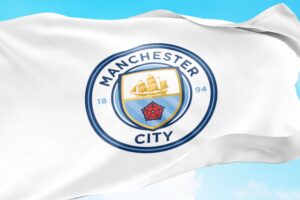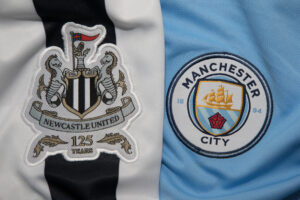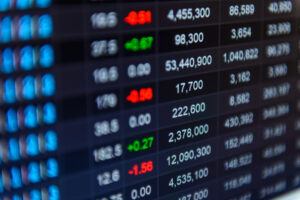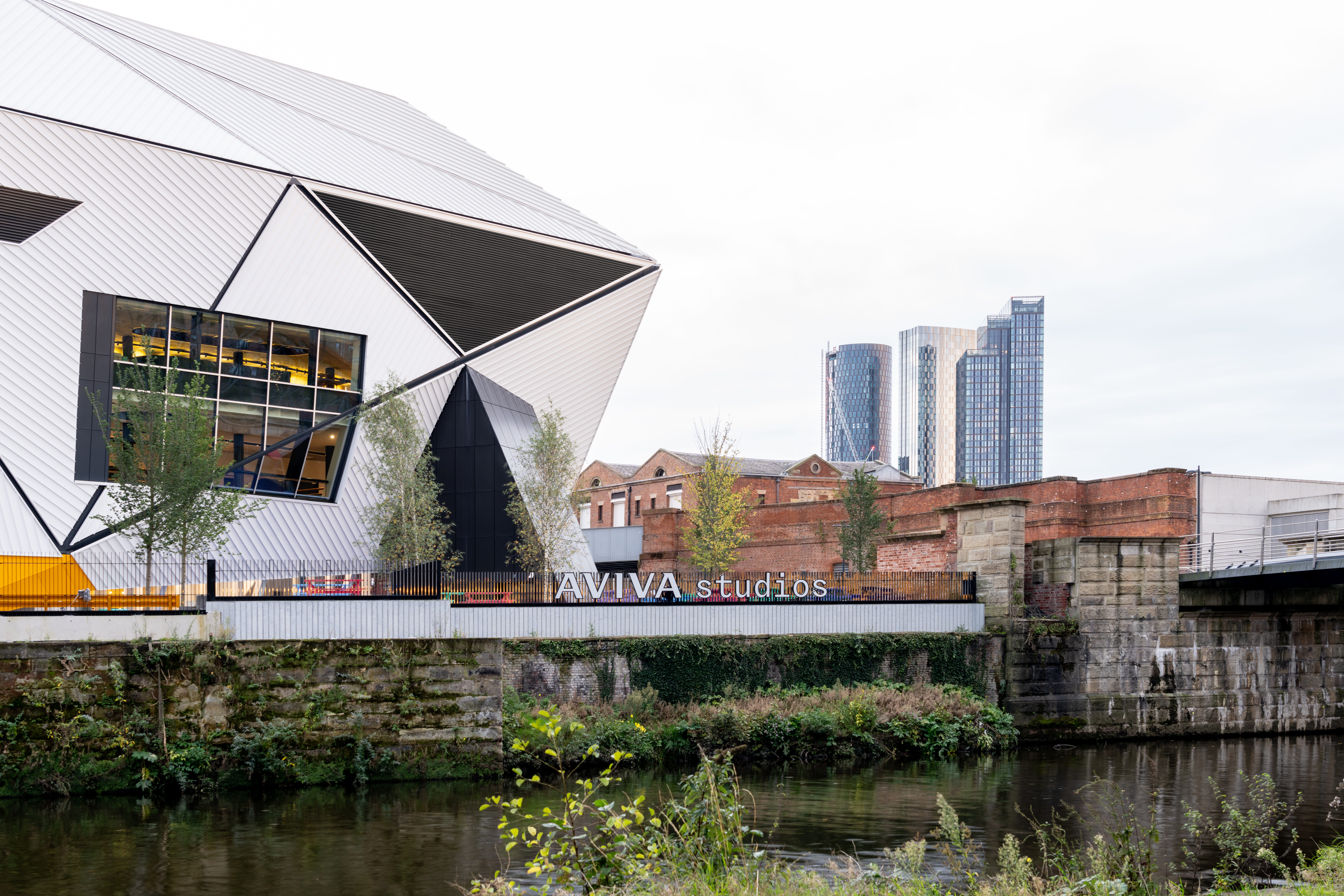Esports Series Part 1: The landscape and opportunities for brands
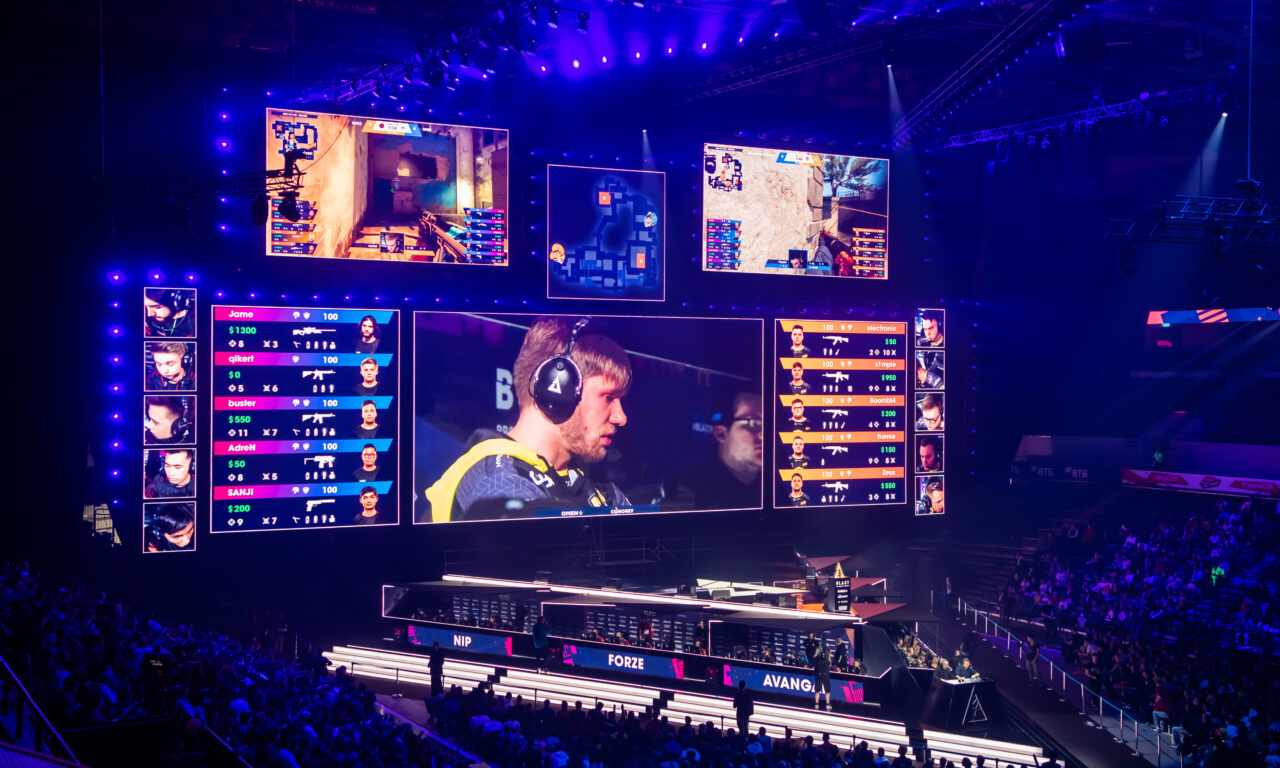
In a world where traditional sports have reigned supreme, a digital contender has rapidly risen through the ranks, capturing the hearts and screens of millions: esports. Its impact is not just limited to players and fans; the business side of esports is buzzing with opportunities and complexities, especially in the realm of sponsorships.
In the first of a new three-part series, we sat down with esports expert Benedikt Becker of Shikenso to simplify the esports landscape, understand how audiences engage with the sport and identify the very best partnership opportunities for brands.
To start, can you briefly describe the evolution of esports from your perspective?
Esports has grown from 1970s arcade competitions to global events today. With platforms like Twitch and YouTube Gaming, the audience reach is now rivalling traditional sports. It's a relatively young but fast-growing industry. It’s an exhilarating journey being involved and shaping the industry.
When it comes to gaming titles, which are the titles that attract the most viewers? And how would you categorize these titles in terms of their appeal and market?
Titles like "League of Legends," "CS:GO," “Dota2,” and "Fortnite" stand at the zenith in terms of viewership. But we also see rising interest in games like Simulation Racing Games which taps into the motorsport enthusiasts, and "Rocket League," combining soccer with motor action. I'd categorize games based on genres and competitive dynamics. For instance, "League of Legends" is a multiplayer online battle arena (MOBA), a genre emphasizing team strategy , while "CS:GO" is a first-person shooter (FPS) with its own dedicated fanbase. "Fortnite," on the other hand, is a battle royale (last man standing) that brought in a lot of casual gamers and non-gamers alike. Brands wanting to delve into esports need a keen understanding of this. It's pivotal to know who's watching—both in terms of geography and demographics—and to recognize each community's distinct way of communicating.
Which are the top teams and can you shed some light on how brands can integrate and collaborate with them?
Teams like G2, Fnatic, and Vitality are among the vanguards of competitive gaming. These teams aren't just competitive giants; they're also commercial powerhouses with vast fan bases. While these teams maintain various rosters across multiple game titles, they've transcended beyond just competition; many have evolved into full-fledged content production hubs , opening avenues for brands to amplify their visibility and value. Brands looking to collaborate should consider a multi-faceted approach: jersey sponsorships, event partnerships, and even content collaborations that get distributed to platforms like YouTube, Facebook and Twitch. It's also about being genuine and authentic to the gaming community, rather than just plastering a logo. Engage with these teams' narratives, support their ambitions, and the fans will reciprocate the enthusiasm.
What brands are already involved and how has the sponsorship landscape evolved over the years?
The momentum in esports sponsorships truly started to pick up in the 2000s with the advent of organized leagues and international tournaments. Initially, the scene was dominated by endemic brands such as Razer, BenQ, and Intel. However, as non-endemic brands recognized the difficulty of reaching GenZ via conventional means, they identified esports as a potent avenue. This led household names like Coca-Cola, Red Bull, Mcdonald's, and Hummel to make their mark swiftly. It's noteworthy how often a pioneering brand's foray into esports has acted as a catalyst, prompting peers from the same sector to join the fray. Annually, we witness fresh industries—from apparel and grocery to the crypto space—gravitating towards esports. Sectors like travel, hospitality, insurance, and banking might soon intensify their engagement in esports.
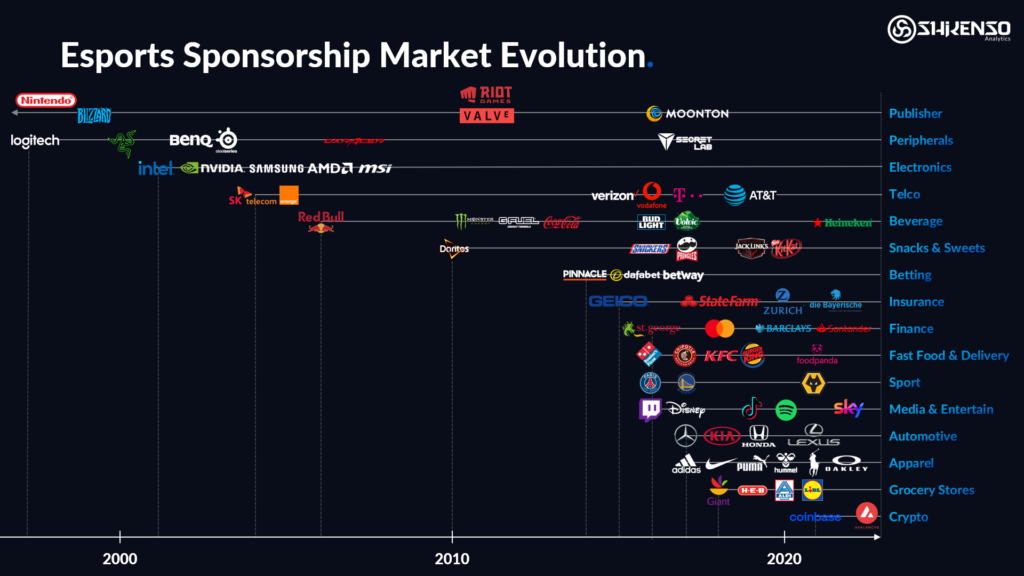
Picture: The Sponsorship Market Evolution with some of the most significant moves in Esports, Shikenso, a company using AI technology to track sponsorship exposure.
Can you touch upon the major events in esports and how brands are involved?
Esports events today are monumental, mirroring the magnitude of traditional sports mega-events in many ways. Names like the "League of Legends" World Championship, "The International" for Dota 2, and the "CS:GO" Major Championships spring to mind when we talk of these marquee occasions. In terms of sheer numbers, some of these tournaments have achieved viewership soaring into the multi-millions across the globe. A case in point is "The International" in 2021, which boasted a prize pool crossing the $40 million mark, showcasing the massive engagement and gravity these competitions wield.
What's fascinating is how brands have innovatively made their presence felt in these events. Beyond the traditional ad placements and team sponsorships, they are embedding themselves seamlessly into the gaming experience. Online and offline activations are becoming increasingly prevalent. On the digital battlefield itself, brands are securing placements. Highlight replays, a critical component where viewers are most engrossed, now often come with sponsor integrations. For instance, Mercedes Benz and Mastercard have executed this brilliantly at the LoL MSI 2023, ensuring their visibility during the most intense and climactic moments of a match.
In the next segment of this interview series, we'll zoom into the esports audience and what it makes stand out. Benedikt will also share the key metrics essential for evaluating and enhancing sponsorships. Stay tuned.


